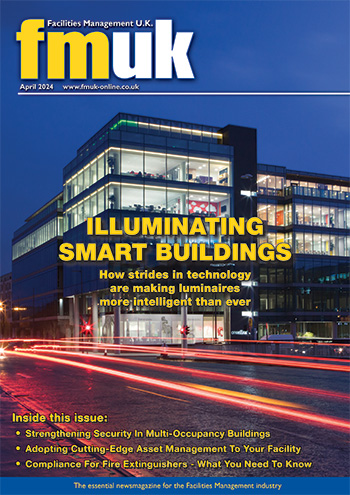Is Moving Offices Out Of City Centres Good Or Bad For Sustainability?
 Businesses across the UK are considering whether it is time to leave the city centre and move to offices on the edge of town or to rural areas where there is more space for social distancing and a less stressful commute. But is the new trend good or bad for sustainability?
Businesses across the UK are considering whether it is time to leave the city centre and move to offices on the edge of town or to rural areas where there is more space for social distancing and a less stressful commute. But is the new trend good or bad for sustainability?
Moving out of the city can have a positive impact on the environment if it leads to a shorter commute, encourages people to walk or cycle to work, reduces pollution from city centre deliveries and provides an opportunity to create a more circular, energy efficient office environment.
But it could just as easily lead to a greater reliance on car travel, unnecessary replacement of office furniture and interiors, and require an energy-intensive new build which negatively impacts the environment. In addition, the local economic and social fabric of a city community should be a major consideration when analysing the sustainability impacts.
For many businesses, balancing those issues is a huge challenge.
Ann Beavis, Head of Sustainable Development at workplace experts Crown Workspace, provides some guidance…
The positive impacts of relocating from city centres
1 Reducing congestion on the roads and reducing the overcrowding of public transport
Businesses moving out of city centres have the potential to help reduce overcrowding on public transport. This supports the need to socially distance and offers the possibility that drivers may be encouraged back onto public transport if they feel their commute will be less crowded.
Public transport provides a much more sustainable alternative to car travel but there’s an argument that if it was less crowded it would be more accessible; because with fewer people, you can actually improve the flow and make it a more pleasant experience.
2 Improving air quality and lowering emissions
Fewer cars in the centre of towns would also lead to better air quality, which is important both for sustainability and for health. Pollution in city centres remains a significant problem in the UK and it’s important to consider here that it isn’t only employees who drive in city centres – deliveries from suppliers are part of the problem. By moving businesses out of city centres, the number of delivery vehicles entering city centres will decrease.
One the most recent initiatives is the Last Mile campaign which encourages logistics companies to complete the last mile of delivery in an environmentally friendly way, for instance by bike. Statistics show up to 90 per cent of the environmental impact of a city centre journey comes in the last mile where congestion is at its peak.
3 Getting back to nature
Moving out of the centre can reduce commute times and allow people to spend more time outside to connect with nature and the local environment, which is good for wellbeing. Office buildings in these regions traditionally have more space because the rent and rates are cheaper. These are all important aspects of the sustainability agenda.
4 Encouraging active travel
Active travel is an important aspect of sustainability because if people can be encouraged to walk or cycle to work that can only be a good thing for the environment and for their personal health.
There are some really strong initiatives around active travel which businesses can tap into – and it’s far easier to achieve in out of town workplaces, where cycling is less stressful. London has made big strides by introducing cycle lanes in recent years, but the roads remain busy and cycling can still be a frightening experience for some.
5 Bringing people back into the office
It is easy to think of working from home as being good for the environment, and we’ve all seen the improvements in air quality and congestion since the lockdown began. However, it’s not all good news for the sustainability agenda. Heating and lighting levels in city centre offices may remain the same even if they are providing heating and lighting for fewer people, so the energy goals set by companies which were based on per-person statistics are now skewed. In addition, there is often an increased energy demand on individual homes – in households which may previously have been empty during working hours, lighting and heating is now required. By having the workforce all in one place, an employer arguably has greater control over energy usage, waste production and recycling, and how this is managed.
The sustainability issues to be wary of when leaving the city centre
1 Don’t simply send your office contents off as waste or recycling
The temptation to get rid of everything from the old office and start again is strong for some businesses. But that means missing out on an opportunity to design the new workspace in a way that is sustainable, makes optimum use of space and layout, and is also relevant to the specific needs of your employees. In addition, an office in the suburbs or city outskirts is likely to be very different to the corporate offices being left behind in the city centre and requires a new vision. However, there are better options then simply sending furniture and IT for recycling, more circular solutions should be considered as a priority. For example, office furniture can easily be refurbished, repaired, re-sold or donated.
2 Don’t presume IT and tech cannot be refurbished or sold
Many businesses do not realise that IT and audio-visual equipment can also be refurbished, upgraded, sold or donated rather than thrown away. This is a more sustainable option than buying new, and modern secure data destruction techniques mean selling or donating IT equipment is no longer a privacy issue. You can be sure that the data has been destroyed securely and most IT reuse businesses will provide a certificate to confirm this.
3 Don’t be tempted to skimp on new furniture
For most businesses the cost of new furniture is a small percentage of their relocation costs, and yet often they choose to go for short-term, low-cost options rather than think long-term. Higher quality furniture from sustainably sourced materials may cost more but also lasts longer and is easier to refurbish or sell when no longer needed. There are more sustainable and circular business models available, such as buying or leasing quality used furniture.
4 Refurbish and refit an existing building rather than building a new one if you can
Businesses which decide to build a new office need to think carefully about the design, what materials they use and how energy efficient it will be, There’s a big drive to consider how to refit existing buildings in an energy efficient and sustainable way, rather than knocking down and starting again. It’s not possible for everyone, however, and the environmental impact will depend on many factors, including where the build is taking place.
Sustainable workplace change is certainly a challenge for organisations and it is important to also recognise that unintended consequences from some of the most well-meaning decisions can still be a threat. There is increasingly excellent research being carried out that provides strong case studies and guidance for decision makers which will help guide those who want to deliver on the sustainability agenda.
Click the article to enlarge it.



























































